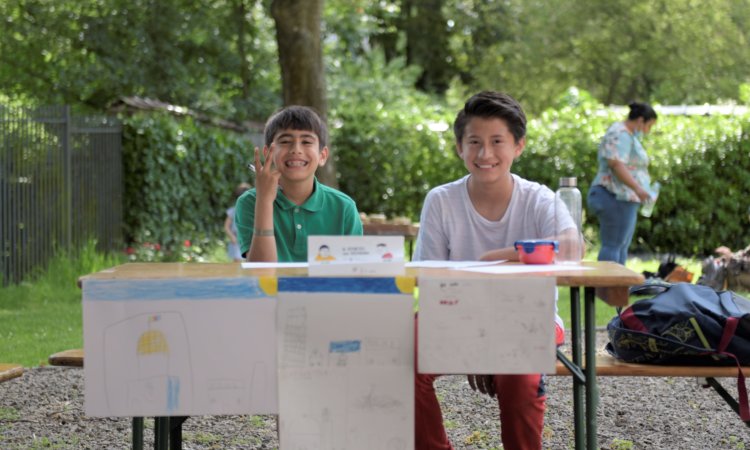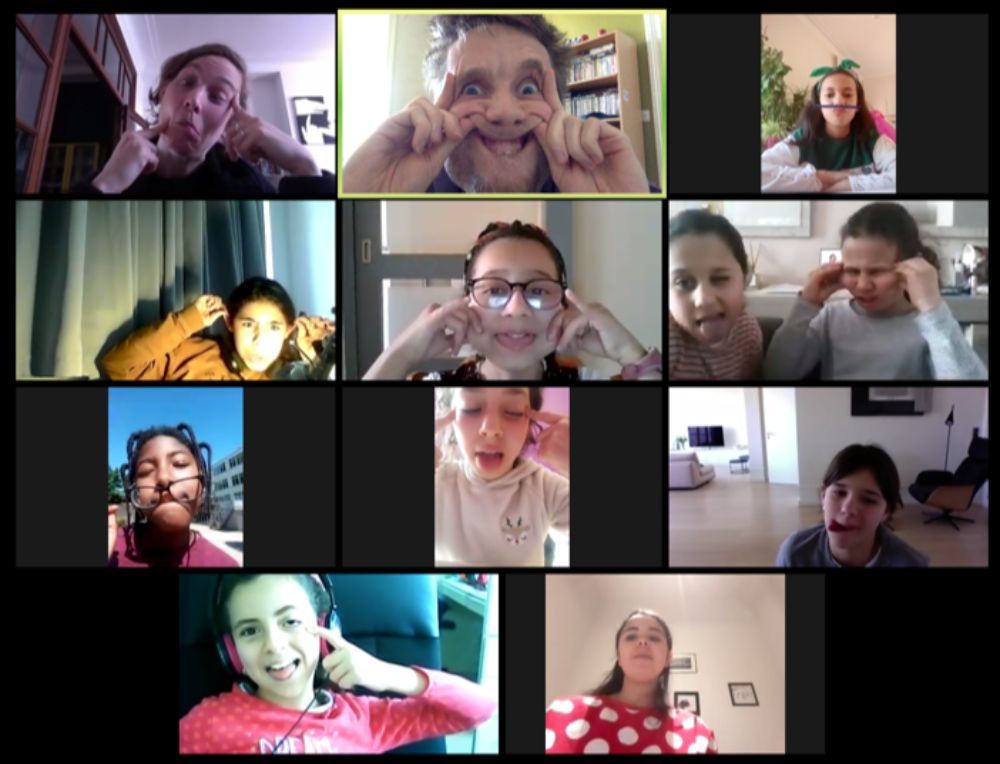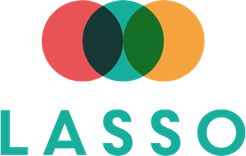
pARTicipe! | Experimenting with youth participation
With the pARTicipe! project, Lasso worked to strengthen cultural participation among children and teenagers in Brussels. We did this by setting up collaborations between youth organisations or (broad) schools and cultural organisations from early 2020 to late 2022. Now that the project is coming to an end, Marijke and Beatriz, who supervised the project on behalf of Lasso, look back on the three years in which pARTicipe! ran.
Lasso: How did pARTicipe! come to be?
Marijke: In the first year, we invested a lot of time in personal conversations. With people or organisations we had already come into contact with, but also with new contacts, which we actively sought out. Little by little, we gained insight into the wishes and needs of organisations working with children and teenagers. We not only learned about their mission and operations, but also about the reasons why their employees wanted to focus on culture for and with young target groups. At the same time, we also entered into dialogue with cultural organisations and artists who wanted to work with children and teens in a participive way. This helped us to get a feel for the possibilities in the artistic field. Gradually, a network emerged that became the breeding ground for a number of experimental collaborations.
That networking phase was quite intensive; we had dozens of conversations. The importance of networking is often underestimated. In day-to-day operations, people often don't make time for it, even though it can lead to more creative collaborations. That's why we used our experiences to develop a tool and a training programme to help professionals reflect on this in their own work.
Building bridges between sectors that each have their own objectives, vision and working methods... How do you do that?
Marijke: Every sector has its own characteristics, of course, but there are also many similarities. In this case, the organisations and the employees involved shared the ambition to focus more on art and culture, specifically for children and teenagers. After all, everyone wants Brussels youngsters to have every opportunity to discover the rich cultural world and to develop their artistic talents to the full. In concrete terms, we created opportunities for professionals to come together, such as inspiration moments. These were attended by youth workers, teachers, cultural workers and artists who normally rarely cross paths because they work in different sectors. Suddenly, they had a reason to meet each other and learn about each other's way of working. This rather informal way of making face-to-face contact creates opportunities in the short or long term. It makes potential collaborations tangible and ensures that you get a realistic picture of each other's expectations.
So everything came about rather organically?
Beatriz: We also actively engaged in matchmaking between organisations. Based on specific questions, needs or wishes, we searched for partners in the broad Lasso network, across sectors. Then we tried to connect the right group with the right person, someone who had the necessary skill set. And we tried to ensure that there was a click, that clear goals were formulated between the different parties, that people took the time to clarify their needs and expectations in relation to each other, etc.
The project required a lot of customisation because there are no standard procedures. It's like a big puzzle. On the one hand, there are the wishes, needs and living environment of children and young people, and on the other hand, there are the personalities and necessary skills of professionals.
- Marijke
Beatriz: For the pilot project with Minor-Ndako, an organisation that provides care and guidance for minors, we ended up with experienced artists with a strong pedagogic profile, which is necessary when working with children from a residential group. And when collaborating with primary school De Muziekladder, we had to look for someone with experience in various artistic disciplines, in order to connect with all the interests of the group and bring them together in a single project.
This required a great deal of customisation, as there are no standard procedures. It is like a big puzzle. On the one hand, there are the wishes, needs and living environment of children and young people, and on the other hand, there are the personalities and necessary skills of professionals. Often, there were many practical preconditions on top of that, in order to be able to bring the right organisations and people into contact with each other. It was a search process that we went through again and again with the professionals involved, and in which the group of children or teens also had a say. The organisations that participated in a pilot project experienced Lasso's mediation as a great added value. For example, because artists who would otherwise have had difficulty finding each other were brought together, or because the partners were able to focus on their own strengths, as they did not have to deal with practical or administrative matters.
I remember very well what Lasso offered as a framework and how important such a framework is. So much energy goes into connecting and mediating. And when you have to take care of all that yourself as an artist, you can focus less on what you want to present artistically.
- Heike Langsdorf, artist
It seems as if it wasn't just a matter of finding partners, but also of how to give people a say and let them participate.
Beatriz: Absolutely, because every project is different. Sometimes the interests of a group are very diverse. Occasionally there is already a concrete artistic idea, but sometimes you have to start from scratch. We switched between different levels of mediation for each collaboration, and sometimes even within the same collaboration. There were moments when everything went very smoothly, like with IBO Nekkersdal, who worked independently with the BabbelArt conversation method. At other times, the collaboration was much more intensive, for example in the collaboration with Minor-Ndako, which involved experimenting with sound. And when the lockdown (March 2020, ed.) took us by surprise, the vlogging pilot project with the Chambery community centre was forced to continue digitally in the living rooms of the group.

The place that cultural participation is given within an organisation also varies greatly. In some organisations it is ingrained, while others want to work on it but don't know how, or don't have the time or resources to do so. However, experiencing this diversity of contexts within the project was also a goal. We deliberately wanted to run trials with very diverse groups in order to be able to share a diversity of experiences and learnings afterwards. Nevertheless, we were able to derive certain broad principles from the way in which the participatory aspect took shape. We incorporated these into a step-by-step plan.
Do you map out the course of each collaboration or testing ground?
Marijke: Lasso provides a framework. We know which direction we want to go, namely to build a bridge between the group's living environment and the cultural world as quickly as possible. To achieve this, we sometimes take a few extra turns, we can speed up or we have to slow down. Occasionally, we take a break or have to let go of a collaboration for a while, only to pick it up again at a later date, when the context is right again. We usually manage to strive towards a specific goal, although that goal differs from group to group.
The enthusiasm of the partners is also occasionally dampened by obstacles that hinder the process. During the COVID period, we often encountered staff changes, shortages and overcrowded schedules. Tailored guidance can then help to remove these barriers to cooperation. Together with the partners, we adjust the pace, look at what benefits the group most and sometimes focus on supporting the supervisors. The process with Minor-Ndako is a good example of this.

How do the children and teenagers have a say in the process?
Beatriz: At the start of a pilot project, we use BabbelArt, a conversation tool we developed ourselves. This allows us to open a dialogue with the group about art and culture in a playful way. We always take a creative approach to facilitate participation and do not stick to our own tools though. If we notice that BabbelArt is not sufficient, we look for other instruments that can facilitate dialogue, such as a colouring picture in a programme with preschoolers. These kinds of experiences motivate us to develop new tools ourselves. This is how BabbelArt Impro came about, an illustrated tool that is better suited to younger age groups.
The project has now ended. What next?
Marijke: We are now investing a lot of time in sharing the knowledge and insights we gained during the project. Documenting our experiences was an essential part of pARTicipe! Firstly, we did this for the participating organisations . We then listed potential partners that we had identified for them, or kept a digital logbook that supervisors, children and parents could access.
But above all, we hope that this documentation will inspire a wider audience. The practical stories from the pilot projects have already been posted on our website, with numerous articles highlighting our collaborations from different perspectives. We also made a mini-documentary about two pilot projects and incorporated many of the lessons learned into a number of tools. There is a step-by-step plan for getting started with participatory activities and one for networking. BabbelArt Impro is now also available and we have developed specific training courses. In this way, we are transforming the expertise we have gained into tools that can be used on an ongoing basis, and pARTicipe! is being made sustainable in Lasso's basic operations.

